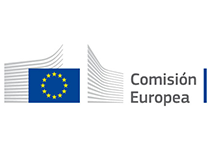
27 de June, 2023
08 de November, 2023
11:59 PM
Patient-centric blood sample collection to enable decentralised clinical trials and improve access to healthcare-HORIZON-JU-IHI-2023-04-02-two-stage
Investigación
"Escuela de Medicina y Ciencias de la Salud - Escuela de Ingeniería, Ciencia y Tecnología"
Comisión Europea
4.500.000 EUR
The overall aim of the project generated from this topic is to create and validate the infrastructure and logistics for blood collection by the patient and/or caregiver at home as a healthcare tool and an alternative to the current gold standard venous blood for routine clinical assays. This project will employ only commercially available CE-marked microsampling devices, according to their intended use. The development of new devices for blood sampling or of new clinical assays / analytes is not the focus of this project, and no new clinical assays will be evaluated. Similarly, given their current maturity, home sample analysis is out of scope.
ExpectedOutcome:
The results of the project generated by this topic will enable innovations in healthcare delivery and research by generating the infrastructure and logistics for blood collection at home, that is simple, minimally invasive, less painful, convenient, and feasible.
Importantly, the project will also provide new insights and enrich information related to the research questions by creating an unprecedented data set that will enable multiple secondary research options for years to come. Notably:
1,It will create insights into the public acceptability for microsampling home: are patients comfortable with a new kind of medical technology? What training is necessary?
2,Are we able to advance the transition of care from the hospital to the home? Does the care quality improve?
3,How do we utilise the higher frequency of data, including its integration with electronic medical records and using advanced analytics methodology?
4,Do doctors’ practices and decisions change with the increased frequency of biomarker data, and does it lead to better outcomes for the patient?
While integrating existing components for microsample collection and central lab analysis, quality standards for the new infrastructure and logistics will be rigorously and transparently validated and established in Europe and harmonised with parallel ongoing efforts in the USA. The harmonisation will critically enhance the implementation of microsampling in global clinical trials of new therapeutics. The validation and establishment of microsampling at home by patients and/or their caregivers will be undertaken in ways that are acceptable for patients and their caregivers, health care professionals, regulatory agencies, policy makers, Health Technology Assessment (HTA) experts, payers, and advocacy groups.
Proposal page limits and layout: described in Part B of the Application Form available in the Submission System
at stage 1 of a two-stage Call, the limit for RIA short proposals is 20 pages;
at stage 2 of a two-stage Call, the limit for RIA full proposals is 50 pages.
Documents: (Check them on the webside).
IHI JU Evaluation form for Research and Innovation Actions (single and two-stage Calls)
IHI JU Proposal template (RIA/SP) - Part B
•Colombia is eligible as a third country, for this it must participate with the role of partner together with a consortium with at least three entities from different European/associated countries).
OBJETIVO/DESCRIPCIÓN
The overall aim of the project generated from this topic is to create and validate the infrastructure and logistics for blood collection by the patient and/or caregiver at home as a healthcare tool and an alternative to the current gold standard venous blood for routine clinical assays. This project will employ only commercially available CE-marked microsampling devices, according to their intended use. The development of new devices for blood sampling or of new clinical assays / analytes is not the focus of this project, and no new clinical assays will be evaluated. Similarly, given their current maturity, home sample analysis is out of scope.
REQUISITOS CLAVE
ExpectedOutcome:
The results of the project generated by this topic will enable innovations in healthcare delivery and research by generating the infrastructure and logistics for blood collection at home, that is simple, minimally invasive, less painful, convenient, and feasible.
Importantly, the project will also provide new insights and enrich information related to the research questions by creating an unprecedented data set that will enable multiple secondary research options for years to come. Notably:
1,It will create insights into the public acceptability for microsampling home: are patients comfortable with a new kind of medical technology? What training is necessary?
2,Are we able to advance the transition of care from the hospital to the home? Does the care quality improve?
3,How do we utilise the higher frequency of data, including its integration with electronic medical records and using advanced analytics methodology?
4,Do doctors’ practices and decisions change with the increased frequency of biomarker data, and does it lead to better outcomes for the patient?
While integrating existing components for microsample collection and central lab analysis, quality standards for the new infrastructure and logistics will be rigorously and transparently validated and established in Europe and harmonised with parallel ongoing efforts in the USA. The harmonisation will critically enhance the implementation of microsampling in global clinical trials of new therapeutics. The validation and establishment of microsampling at home by patients and/or their caregivers will be undertaken in ways that are acceptable for patients and their caregivers, health care professionals, regulatory agencies, policy makers, Health Technology Assessment (HTA) experts, payers, and advocacy groups.
Proposal page limits and layout: described in Part B of the Application Form available in the Submission System
at stage 1 of a two-stage Call, the limit for RIA short proposals is 20 pages;
at stage 2 of a two-stage Call, the limit for RIA full proposals is 50 pages.
Documents: (Check them on the webside).
IHI JU Evaluation form for Research and Innovation Actions (single and two-stage Calls)
IHI JU Proposal template (RIA/SP) - Part B
•Colombia is eligible as a third country, for this it must participate with the role of partner together with a consortium with at least three entities from different European/associated countries).
